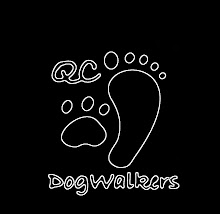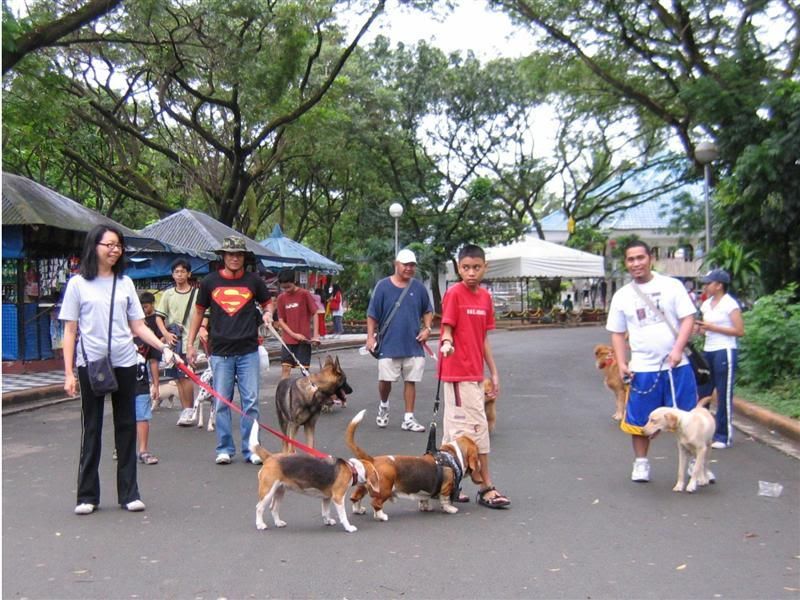I am not a professional trainer, nor an expert in handling dogs. But I hope to share some things I learned from my limited experience in handling dogs. I do hope that this would benefit those who are starting to focus on working dog training.
Today most trainers or dog owners train their dog using treats or toys as a reward. This is normal because it is what was handed down to us. The real art of dog handling was almost forgotten. This was handling dogs base on pure handler-dog communication. No props was used but training or handling was done on subtle communication. Through this handler and dog builds the partnership that based on mutual understanding, and mutual trust. Most people promote using treats so that the dog will have a positive outlook on training, or so that the training would be in a happy mood. But lets think deeper, aren't dogs happy just to be with his handler/owner? Even without food, or toys the dog is just happy to be beside us. What else could be more rewarding to them than our sincerest praise. Now people tend to use treats or toys as a tool to communicate with their dog. It is because it is easier to get their attention. People lost interest on how to really get the dogs attention thus the dog focus more on the toys or reward and not on the handler.
Training working dog should be done through partnership. And if you wanted to have a serious dog, one should train seriously. Its that simple. This is hard to explain through words it is better experienced. But for the purpose of example one of the best example I can think of is the military. They used subtle communication most of the time during operation. They communicate through hand signal, eye contact, with minimal use of voice. This only shows that humans are also capable of subtle communication. Another example is a team sport, such as basketball. With spending time of playing with each other, teammates build a chemistry that does not need for words to communicate. Through eye contact and body movements they can anticipate their teammates movement. This is also true in other team sports. And I believe those who have played team sports know what I was talking about. How do they achieve this? Through practice, training, and need. If a teammate did something good, we do not see other teammates giving him a treat, but the sincerity of joy that one feels is felt by the other just by hearing “good job” or “nice shot”, “good defense” etc. This is also true in the military, most of them will get a pat on the back, a recognition from the officer for a good job. Yes there are promotions but it is because we are humans. It is our human nature that we wanted to be recognized
The difference in dog handling is we will communicate to a different creature. So the challenge here is how to make our dogs understand us, and how can we understand them. This is the magic that was almost gone. The most difficult part is starting, because you are still establishing a working relationship with your dog. Most people claims to be a leader of their dog through making them sit before giving their meal, by not making their dog go out of the door before them or by giving them food or toy rewards. But if we think of what a true leader is, a leader should gain ones respect and trust. Being a leader is being a role model, if you want your dog to do something for you, lead your dog and show him the way. Through this you are communicating with the dog what you wanted him to do. And by showing him the way, you slowly gain his respect and trust. The pup's willingness to follow is a great tool for dog training, if we lead him through obstacles without hesitation, the pup will follow without hesitation. Thus because of his willingness to follow, the pup overcome that obstacle, you gain his trust, he gains confidence. For me that is a true sign of being a leader. The leader goes first, and your subordinate will willingly follow. Example you are in a military, who will gain your trust and respect more, a leader who is a type of “attack! follow me” or “attack I will follow”? Think about it.
Funny as this may sound to many, the dog can see if one has a pure intention with dog training. Its with this trait that they give their best abilities if we ask for it with pure intention. Pure intention means you are building working relationship with your dog, not just training your dog. You do this not because you wanted to, but because you needed to. Another thing is that if you train because you wanted your dog to be better than another dog, this will not work, the dog will be able to feel your intention through your actions and attitude. It may seem to be a foolish idea but the dog will prove that this is true. If you give a pup to a child who is looking for a friend or a pet, you will notice this. As the child runs the pup will follow. If it crosses a body of water, the pup will swim. To a child this is not dog training, this is just playing with the pup, this is pure in intention.
Honesty is also a training tool. We should be honest with ourselves and be able to face our weakness, because a dog will only be as good as its handler. If we are not honest with ourselves, we cannot be successful in communicating with them. Because dogs can sense it and we cannot conceal our true self with them. They are honest creatures, they deserve our honesty. With this we also develop our honesty with other people. The dog is a reflection of his handler. Even if we intend to lie, the dog will show its honesty. This is a very nice story I read from a book and I would like to share, a mentor ask his apprentice to teach the dog to detect a bomb. After a week he said to his mentor, the dog is ready. They put it to the test. This is no ordinary test. He was ask to put a blindfold to his mentor and put the article a few feet away from a cliff, he was shocked as he did not expect this kind of test. If the dog fails to stop on the article it could mean the life of his mentor. One of my favorite excerpt from the book, “if we teach with honesty, we too will become honest, if we teach with sincerity, we too will become sincere”.
There are other traits that are essential in dog handling. Fairness; we should be fair in giving correction, and we should not correct the dog for our mistakes. Consistency; we should be consistent with our commands, we should not give a command if we cannot implement it. If we ask the dog to do a long down stay away from us, then the dog breaks, we should go to the dog and correct it no matter how far he is. If not, it will realize that at a certain distance we cannot control him. Another way of being consistent is by giving just one command. If we say “sit” we should let the dog sit on the first command, if we say “sit” the dog did not sit, and repeat our command, he will learn to sit after a couple of commands. Another important factor is believing. We should believe and trust on what the dogs can do. We should be observant on its natural abilities, and work with it.
I hope that this short article will encourage more working dog owners to experience the magic that there is between man and dog. So that they may feel the true essence of what is a true leader and friend to their dog. To end this article I would like to share another excerpt from the same book;
If it is your sincere desire to become a better handler, spend time handling
SITE STILL UNDER CONSTRUCTION
Entries are still being added. Please check back from time to time. Thanks!
ABOUT US
Schedule of Activities
Dogwalks
Dog Hikes
Thursday, July 30, 2009
The Art of Dog Handling
Posted by
My Dog World
at
Thursday, July 30, 2009
1 comments
![]()
Subscribe to:
Comments (Atom)

